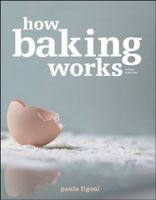Advertisement
Stage III: Cooling
Appears in
By Paula Figoni
Published 2003
When removed from the oven, a baked good continues to cook until its temperature cools to room temperature. This is called carryover cooking. Because of carryover cooking, baked goods must be watched carefully during the last few minutes of baking, and must be removed before—not when—they are baked to perfection.
Even when cooled and properly wrapped, baked goods continue to change during storage. The main changes that occur can be summarized as follows.
- Gases contract and no longer exert pressure on cell walls. Without this pressure, products that do not have porous cell walls and are without sufficient structure (such as soufflés and underbaked items) collapse.
- Fats resolidify and greasiness decreases. Depending on the fat, however, the product could become hard and waxy, as is the case with puff pastry made with a high-melting fat.
- Sugars recrystallize on the crusts of low-moisture, high-sugar products, such as cookies and certain cakes and muffins. This gives these products a desirable crunchy crust.
Starch molecules bond and solidify, and the structure gets firmer and more rigid. Starch bonding— called retrogradation—continues over the next several days, and it is a major cause of staling. Stale baked goods have a hard, dry, crumbly texture.
- Protein molecules also bond and solidify as the product sets, and likely contribute to staling. Until delicate baked goods cool and structure solidifies, it is best not to cut into them, so they will not crush. A good rule of thumb is to cool products to 100°F (38°C) or below before slicing.
- Moisture is redistributed within the crumb of baked goods, which may also contribute to staling.
- In high-moisture products like bread, moisture moves from moist crumb to dry crust, and the crust loses its crispness over the next day, sometimes becoming tough and rubbery.
- Flavors evaporate, and over the next day or so, wonderful fresh-baked flavors are lost. Some flavor loss occurs because flavors become trapped by starches as they retrograde. Where this is the case, a brief reheating in the oven recovers some lost flavor and softens the structure.

